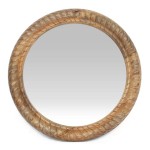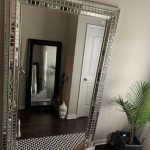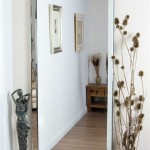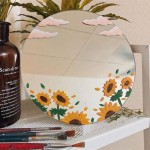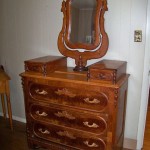Wall Mirror Repair Kit: A Comprehensive Guide
Mirrors play a vital role in both residential and commercial spaces, offering functionality and enhancing aesthetics. Unfortunately, mirrors can be susceptible to damage, ranging from minor scratches to significant cracks. Utilizing a wall mirror repair kit offers a cost-effective and often straightforward solution for restoring a damaged mirror without requiring complete replacement.
Wall mirror repair kits are designed to address various types of mirror damage, primarily focusing on cracks and chips. These kits typically contain specialized adhesives formulated for glass, applicators for precise adhesive placement, and often include tools for smoothing and finishing the repaired area. Understanding the different types of kits available can aid in selecting the most appropriate option for the specific damage.
One common type of wall mirror repair kit focuses on crack repair. These kits generally include a thin, cyanoacrylate-based adhesive, often referred to as "super glue," which is designed to bond the separated edges of a cracked mirror. Applicators, such as fine-tipped needles or precision nozzles, allow for controlled application of the adhesive, minimizing excess and ensuring a clean repair. Some kits also include curing agents or activators to accelerate the bonding process.
For addressing chips and small holes, another type of repair kit utilizes a resin-based filler. This filler is typically a two-part epoxy or acrylic resin that is mixed before application. The filler is applied to the damaged area, filling the void and restoring the mirror's smooth surface. These kits often include tools for shaping and smoothing the filler before it hardens, ensuring a seamless and visually appealing repair.
Before selecting a wall mirror repair kit, careful assessment of the damage is crucial. The type and extent of the damage will determine the most appropriate kit. Minor hairline cracks can often be effectively addressed with a cyanoacrylate-based adhesive kit, while larger cracks or chips may require a resin-based filler. For severely damaged mirrors, particularly those with extensive cracking or shattering, professional repair or replacement is recommended.
Proper surface preparation is essential for achieving optimal results when using a wall mirror repair kit. The damaged area should be thoroughly cleaned to remove any dust, dirt, or debris. This can be achieved using a glass cleaner and a lint-free cloth. It is also essential to ensure the mirror surface is completely dry before applying any adhesive or filler.
Following the manufacturer's instructions is paramount for successful mirror repair. Each kit may have specific instructions regarding adhesive application, curing times, and finishing techniques. Carefully adhering to these instructions will ensure the best possible outcome and minimize the risk of further damage.
Applying the adhesive or filler requires a steady hand and precision. Using the provided applicators and following the manufacturer's guidelines will help ensure accurate placement and minimize excess material. For crack repair, applying a minimal amount of adhesive is often recommended to avoid creating a noticeable bulge. For filling chips and holes, applying the filler in thin layers can help prevent cracking during the curing process.
After applying the adhesive or filler, adequate curing time is essential. The curing time can vary depending on the specific product used and the ambient temperature. Disturbing the repaired area before the adhesive or filler has fully cured can compromise the bond and necessitate repeating the repair process.
Once the adhesive or filler has cured, any excess material can be carefully removed. For cyanoacrylate-based adhesives, a razor blade can be used to carefully scrape away excess glue. For resin-based fillers, fine-grit sandpaper can be used to smooth and level the repaired area, blending it seamlessly with the surrounding mirror surface.
Safety precautions are essential when using a wall mirror repair kit. Many adhesives and fillers contain chemicals that can be irritating to the skin and eyes. Wearing protective gloves and eye protection is highly recommended. Adequate ventilation is also important to prevent inhalation of fumes. Disposing of any unused materials or contaminated cloths should be done according to local regulations.
While wall mirror repair kits can effectively address many types of mirror damage, they may not be suitable for all situations. Deep or complex cracks, extensive shattering, or damage near the edges of the mirror may require professional repair or replacement. Consulting a professional glazier can provide expert assessment and guidance on the best course of action for significant mirror damage.
Choosing the right wall mirror repair kit requires careful consideration of the type and extent of damage, the specific materials included in the kit, and the user's experience level. Reading product reviews and comparing different brands can help inform the decision-making process and ensure selection of a high-quality kit that meets the specific repair requirements.

How To Fix A Broken Mirror Comprehensive Guide

How To Repair A Ed Mirror 13 Steps With Pictures Wikihow

Ezy Pzy Mirror Fixing Kit Pack Of 9 Homebase

4pcs Chrome Mirror Wall Hanging Fixing Kit Frameless Clips Mounting Hanger Clamp Lazada

Picture Frame Hanging Set Mirror Wall Fixings Bracket Adjustable Repair Fix Kit

How To Fix A Broken Mirror Instead Of Replacing It Worst Room

How To Remove A Mirror Glued The Wall Forbes Home

How To Fix A Ed Mirror The Diy Repair Guide

How To Fix A Broken Mirror Instead Of Replacing It Worst Room

How To Repair Mirror Scratches A Guide Glass Doctor



